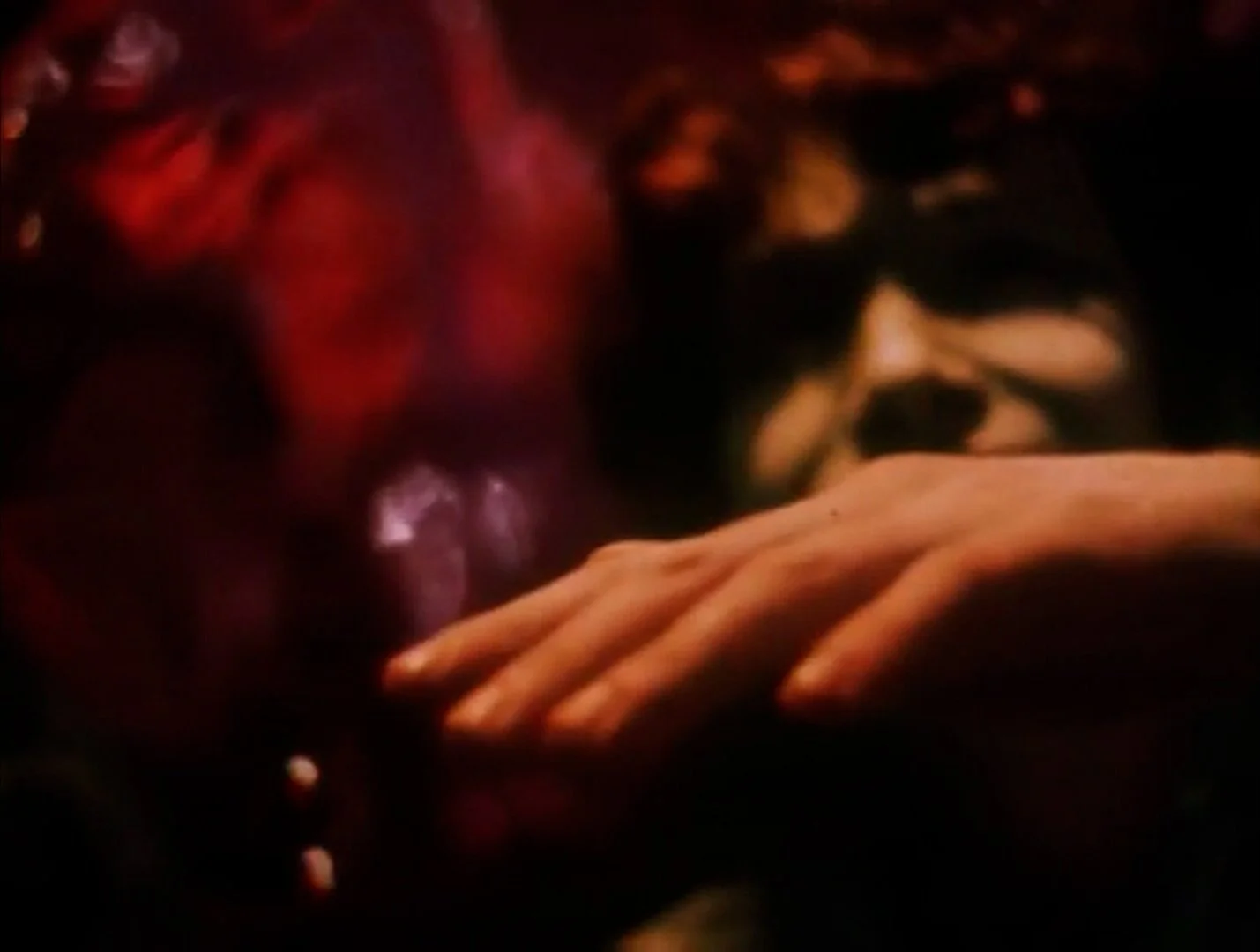
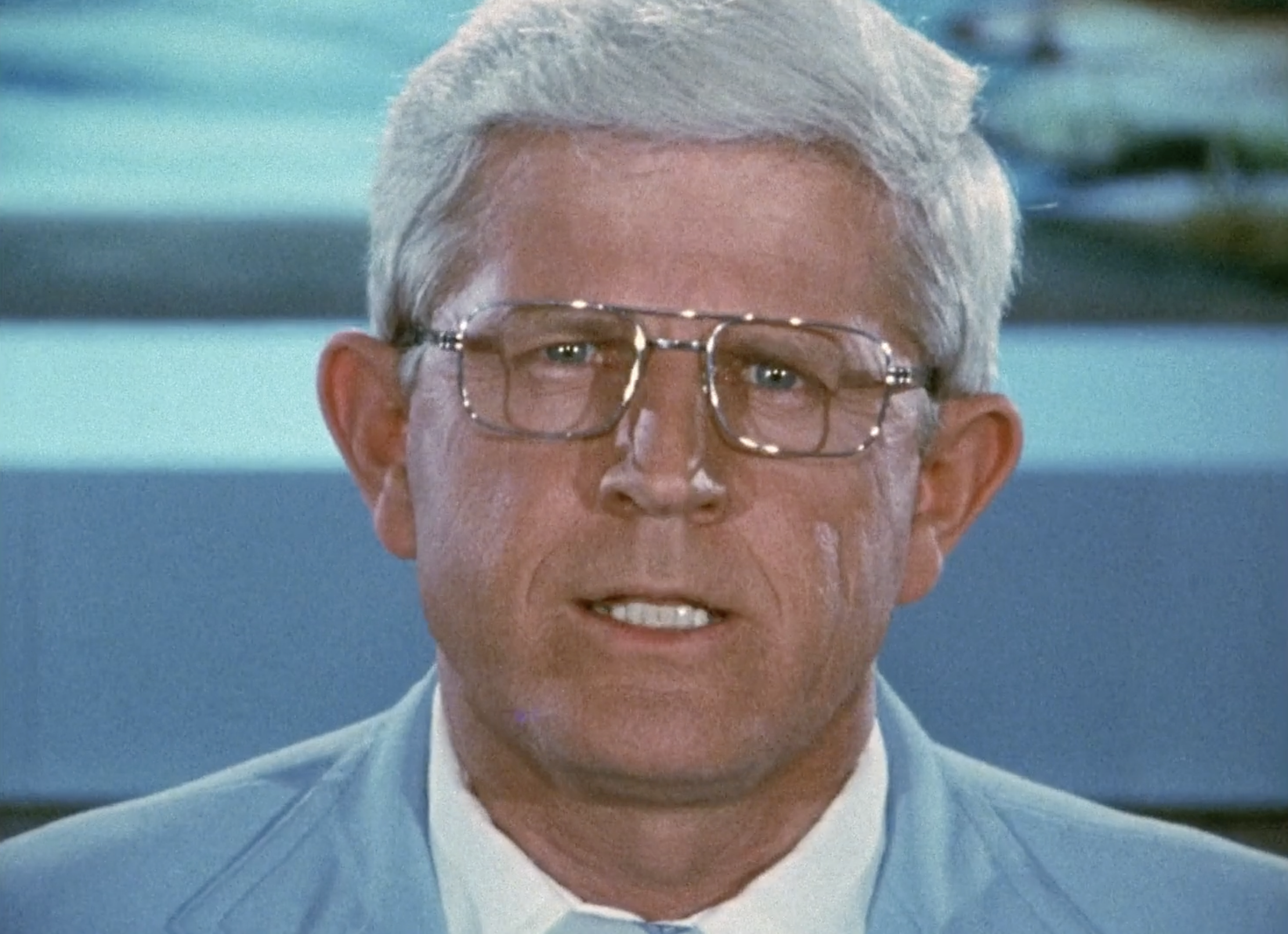
Prophets and Propaganda, or, If Faces Tire You, What Will Movies Do?
Following a near-death experience, Nashville exploitation filmmaker Ron Ormond undertook a series of filmed sermons in collaboration with the evangelical Baptist preacher Estus Pirkle. These collaborations ranged from portraits of heaven and hell to a dire warning of the threat of Communism to America's Christians - a warning realized in such a fashion as to become an enduring curio. From Ormond and Pirkle's collaborations, amateur drama, hysterical fantasy, and manipulative rhetoric resonates far beyond the tent-stakes of the revivalist ministry, in the Church of Camp, from which the preacher’s red-baiting, fear mongering narration and the filmmaker’s exploitation roots could inspire mocking laughter.
In this video essay, Stephen Broomer addresses their collaborations in the context of montage and the close-up, specifically, the heritage of Vorkapich and Dreyer in making a film that is so fixated on the face, here to the end of brainwashing.
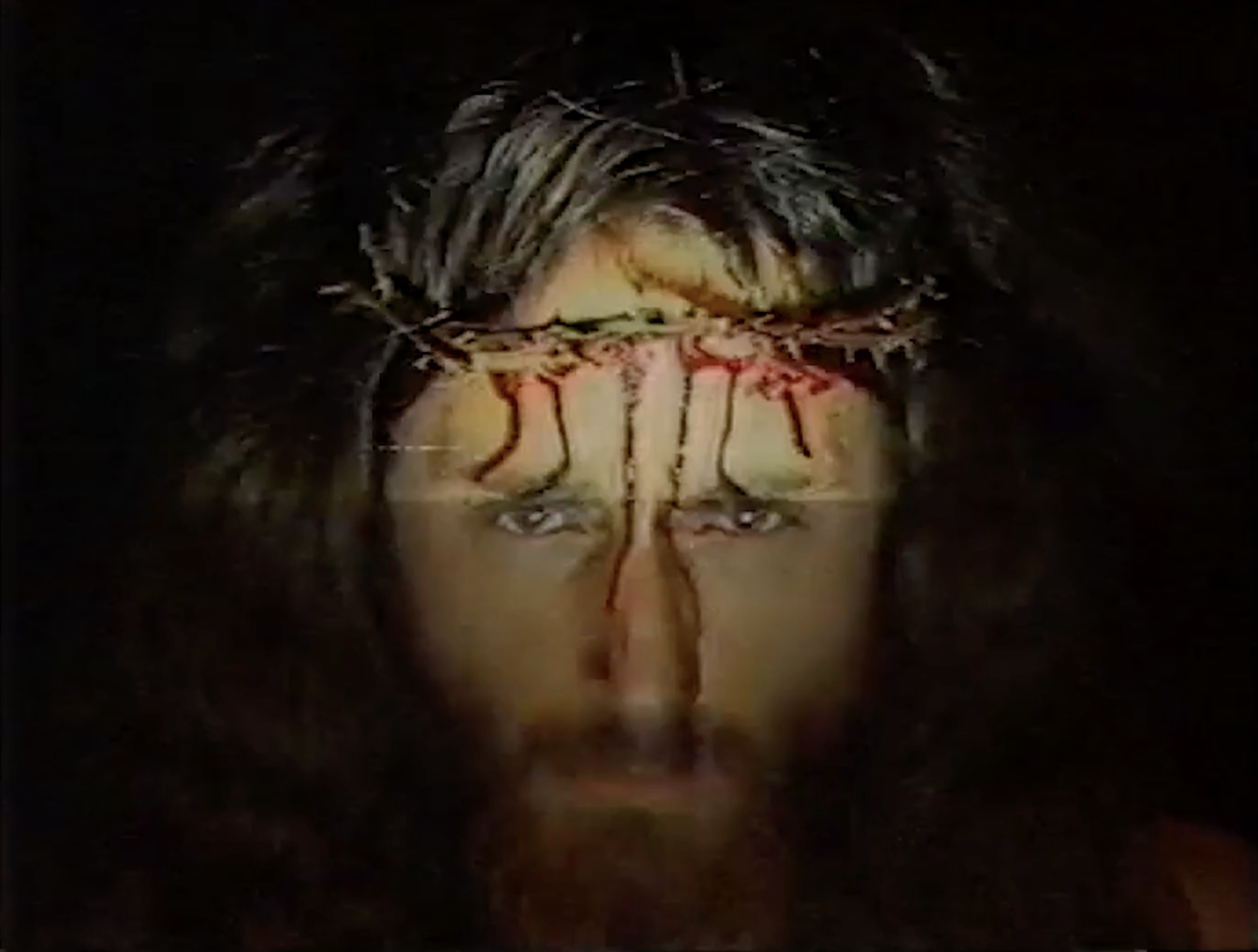
The Right Place: Martyrs and Monsters in Suffer Little Children
Suffer Little Children was made by the Meg Shanks drama school in south London, with a cast of intergenerational theatre students. Meg Shanks is credited as screenwriter and local talent promoter Alan Briggs as director, but there are indications that Shanks and Briggs were simply conductors of the students’s improvisations, that the film is a semi-coherent assembly of scene studies threaded together by a horror story. Suffer Little Children might best be described as a record of children-at-play. The Japanese poet-priest Kobayashi Issa offers this haiku: “children imitating cormorants / are even more wonderful / than cormorants”; in other words, the naivety of a child’s mimicry is a primal encounter with the soul of creativity. Suffer Little Children bears out something like Issa’s praise, the transcendent possibilities of the imagination of children, cawing and barking, internalizing the poetry of the world around them, playing and playing dead, rolling the stone away.
In this video essay, Stephen Broomer focuses on the relation between Suffer Little Children's themes - of intrusion, good and evil, and the secret world of children - and the naivety of its form, which gives way to a bizarre event of vernacular surrealism.

Return to Me: Fantasy and Docudrama in Chained for Life
The Hilton Twins were born conjoined, a rare condition, an anomaly that captures public attention not only as spectacle, but also for its symbolic power. Conjoined twins can represent, in extremity, the bond of siblings, or even more generally the notion of an abiding companionship. For the rarity of their condition, conjoined twins are mysterious, and their bodies invites the gawker to speculate on the physical and psychic bonds that may exist between them.
In this video essay, Stephen Broomer explores the story of the Hilton Twins as filtered through the 1952 exploitation film Chained for Life, starring and loosely based on their life.

Neverlands: David Brooks and the New American Cinema
The American underground filmmaker David Brooks came of age in the 1960s. Brooks was preoccupied with myth; he considered Albert Lamorisse’s short film White Mane (1953) and Barrie’s play Peter Pan; or, the Boy Who Wouldn’t Grow Up (1904) to be the essential myths, and his various attempts at making feature films were wrapped up in the making of such myths. The Peter Pan fable is at once central and peripheral to Brooks’s filmmaking: it casts a pall over the whole of his work through the tragedy of Brooks’s own premature death. And yet, in his work, the Peter Pan fable also makes occasional and potent intrusions, evident in his preoccupations with exotic and faraway lands. Brooks’s stable vantage point—the island of Manhattan, often seen in his films in panning shots of rooftops—was also Neverland to Brooks’s childhood home of New England.
In this video essay, Stephen Broomer discusses Brooks's modest body of work in relation to the fable of eternal youth and his community, the New American Cinema, from his vantage point of Manhattan in the 1960s.
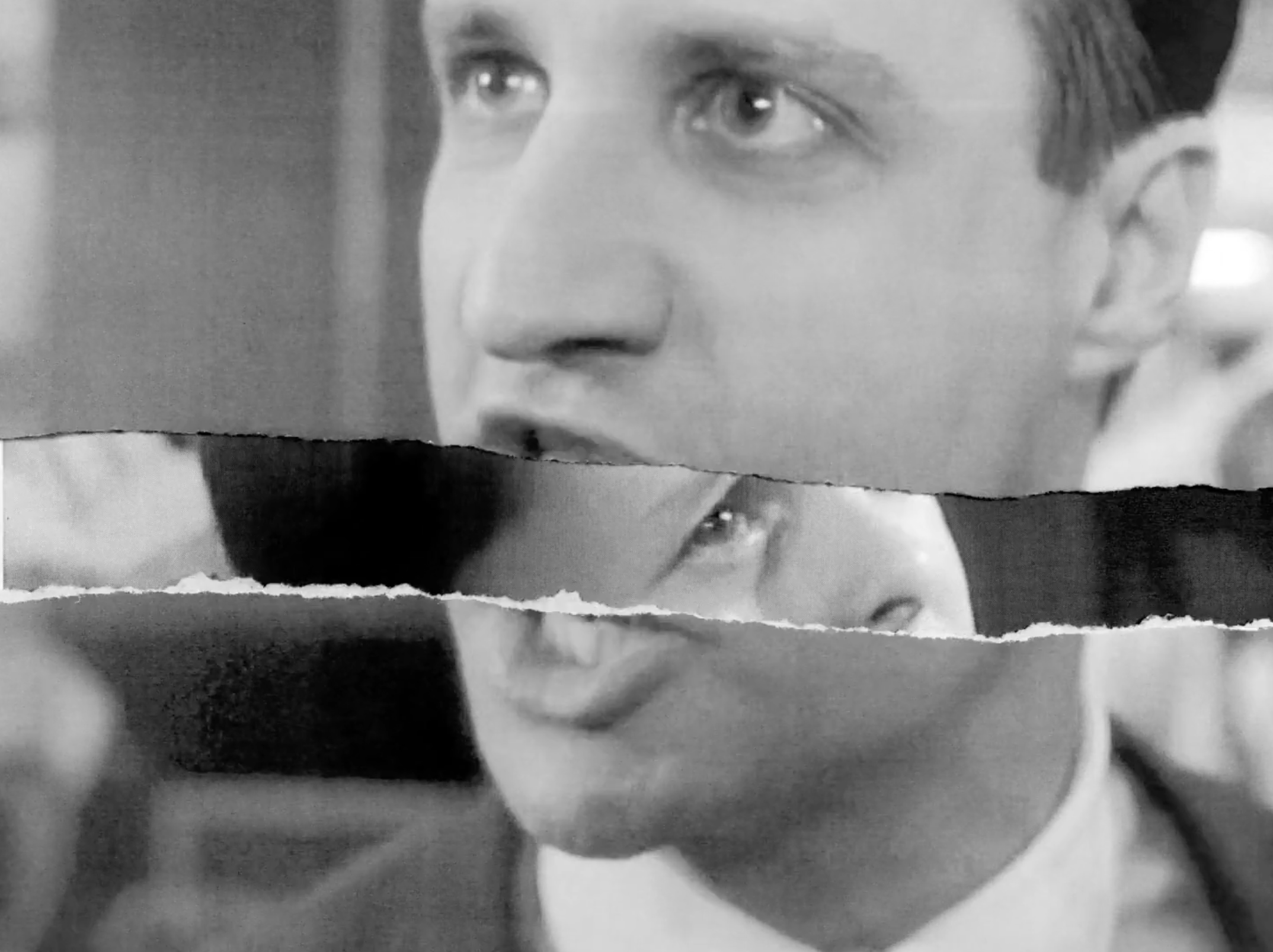
Paperback: Prisoners of the Printed Page in The Timekeepers of Eternity
There was no greater mass-culture storyteller in the last quarter of the twentieth century than Stephen King, and throughout the 1990s, his novels and novellas became fodder for another distinctively mass-culture form: the TV movie. King’s novella The Langoliers, adapted for television by Tom Holland in 1995, traps a cast of characters in a fantastical situation: they awaken on a long-haul flight to discover that all of their fellow passengers have vanished. It is a story about people who aspire to be something other than what they are, some more than others. In 2021, the Greek filmmaker Aristotelis Maragkos undertook a re-adaptation of King’s novel, an adaptation twice removed: The Timekeepers of Eternity is a remix of Holland's adaptation, condensing its three hours to one tight hour. In this video essay, Stephen Broomer discusses Maragkos's film in relation to the themes of his source film and King's novel.
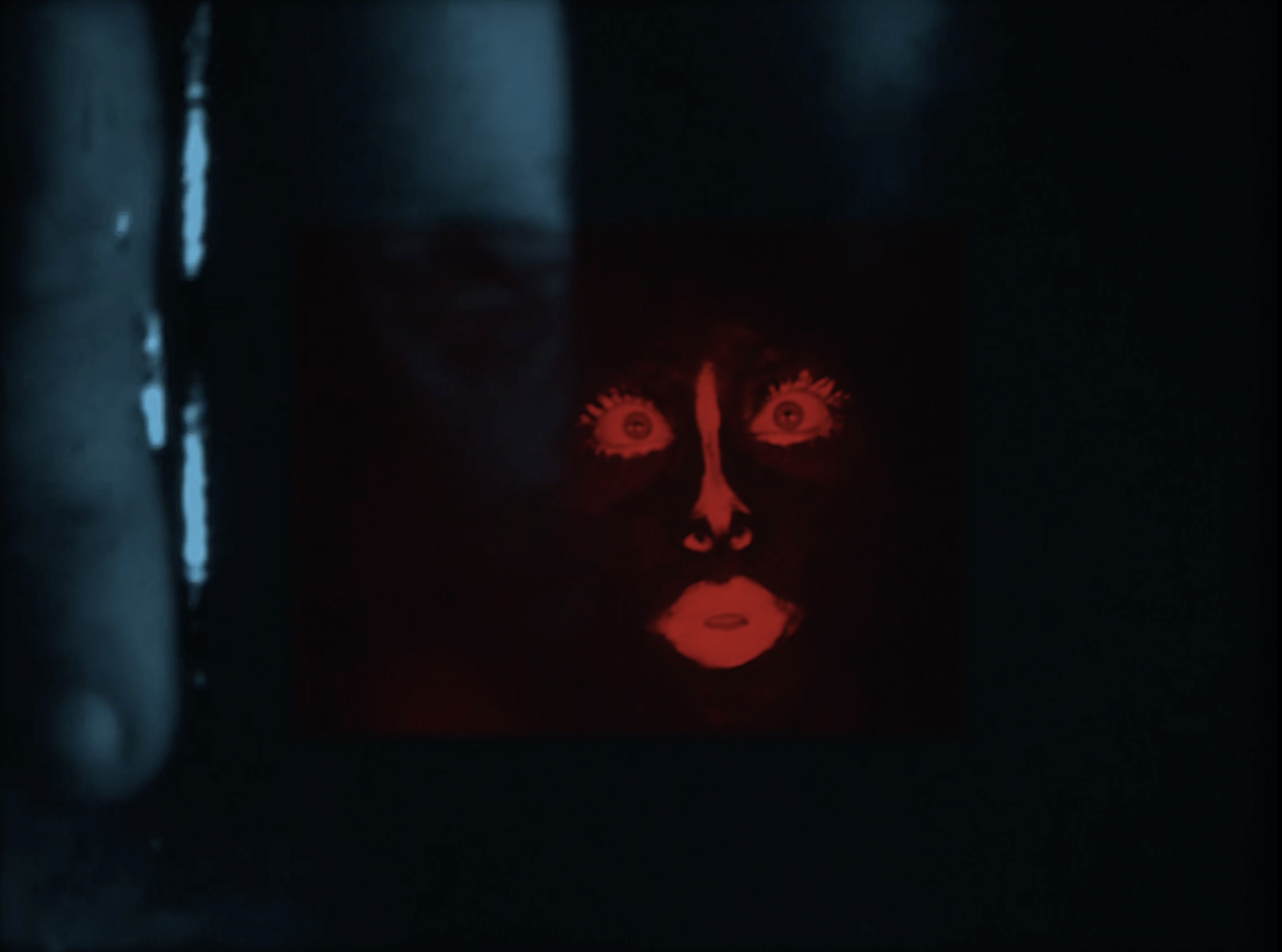
The Birth of New Wisdom: Christmas on Earth, an Impossible Reconstruction
Barbara Rubin, at 18 years old, made Christmas on Earth as a challenge to the frigid, oppressive society in which she had come of age. A ward of Jonas Mekas and a major force in her own right in the New York underground, Rubin had direct experience confronting oppressors, defending a rebellious, transgressive strain of the New American Cinema typified by Jack Smith’s Flaming Creatures. Christmas on Earth, made in the midst of such confrontations, is Rubin’s response to Flaming Creatures, and an extension of its challenge. It is an act of expanded cinema, a projector performance, in which two half-hour reels, played simultaneously, invite us to witness painted bodies in a variety of couplings.
In this video essay, Stephen Broomer deals with Rubin’s film and its endurance, in terms of anachronism and the parallels between sexual experience and evanescent art-making.
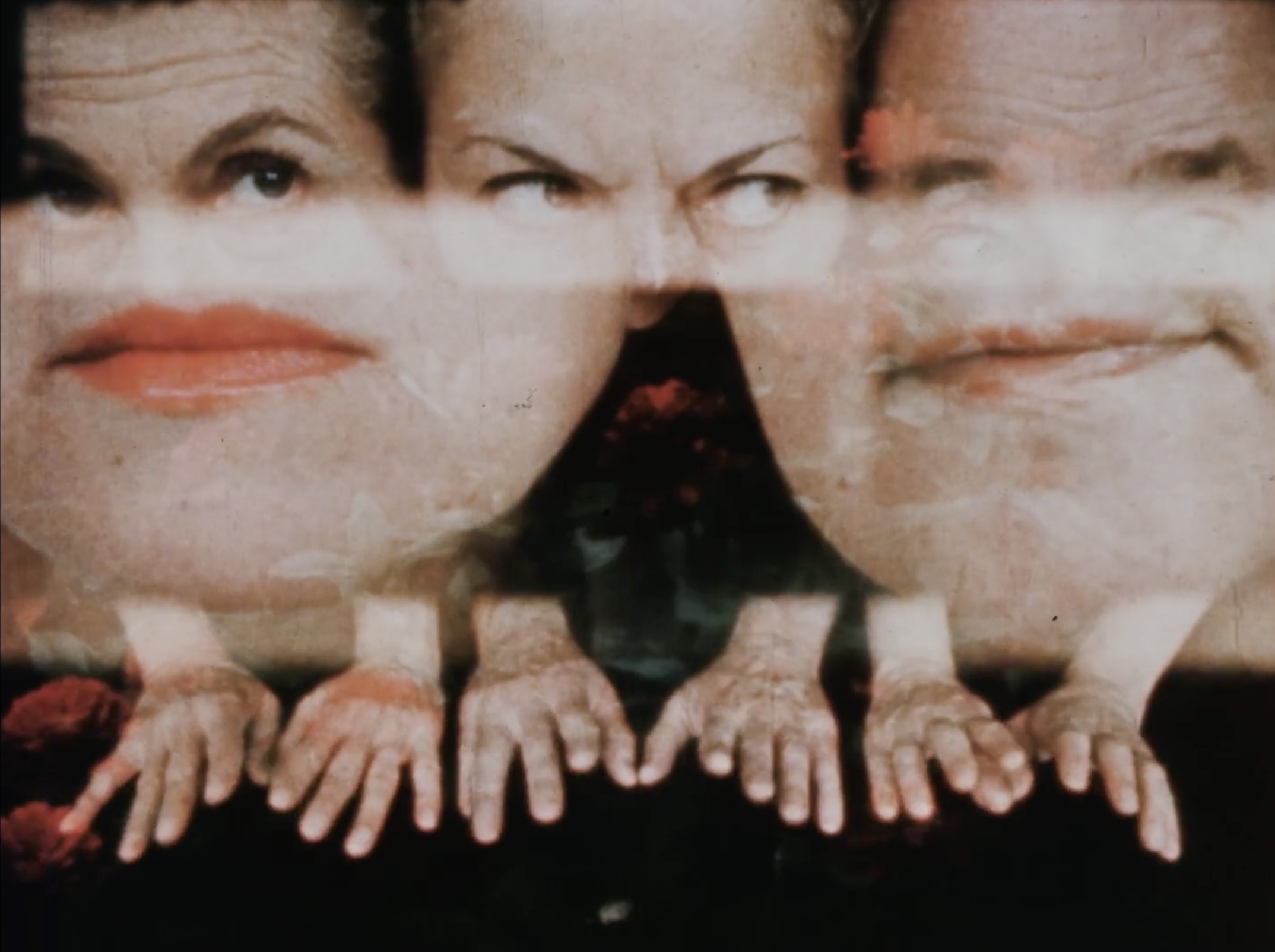
Begging to Be Born: Dreaming Together in Storm De Hirsch’s The Tattooed Man
In 1969, De Hirsch received a grant from the American Film Institute to make a film adaptation of her poem, “The Tattooed Man.” The resulting film renders the experience of a dream, imagined as the course of a life, a world in itself. Her players are assigned roles as the makers, dreamers, and killers of the dream. Prentiss Wilhite and P. Adams Sitney appear as the makers of the dream, and as such serve as the film’s central figures; by their designation as makers of the dream, they are cast in god-like roles, sacred beings set apart from the dreamers and the killers, who they are, by some supernatural or hypnotizing psychic force, drawing into a collective dream.
In this video essay, Stephen Broomer places De Hirsch's film in the context of her poetry and of the underground community around her. The Tattooed Man is a mythopoeic film, a portrait of genetic memory and trauma, a visionary quest.
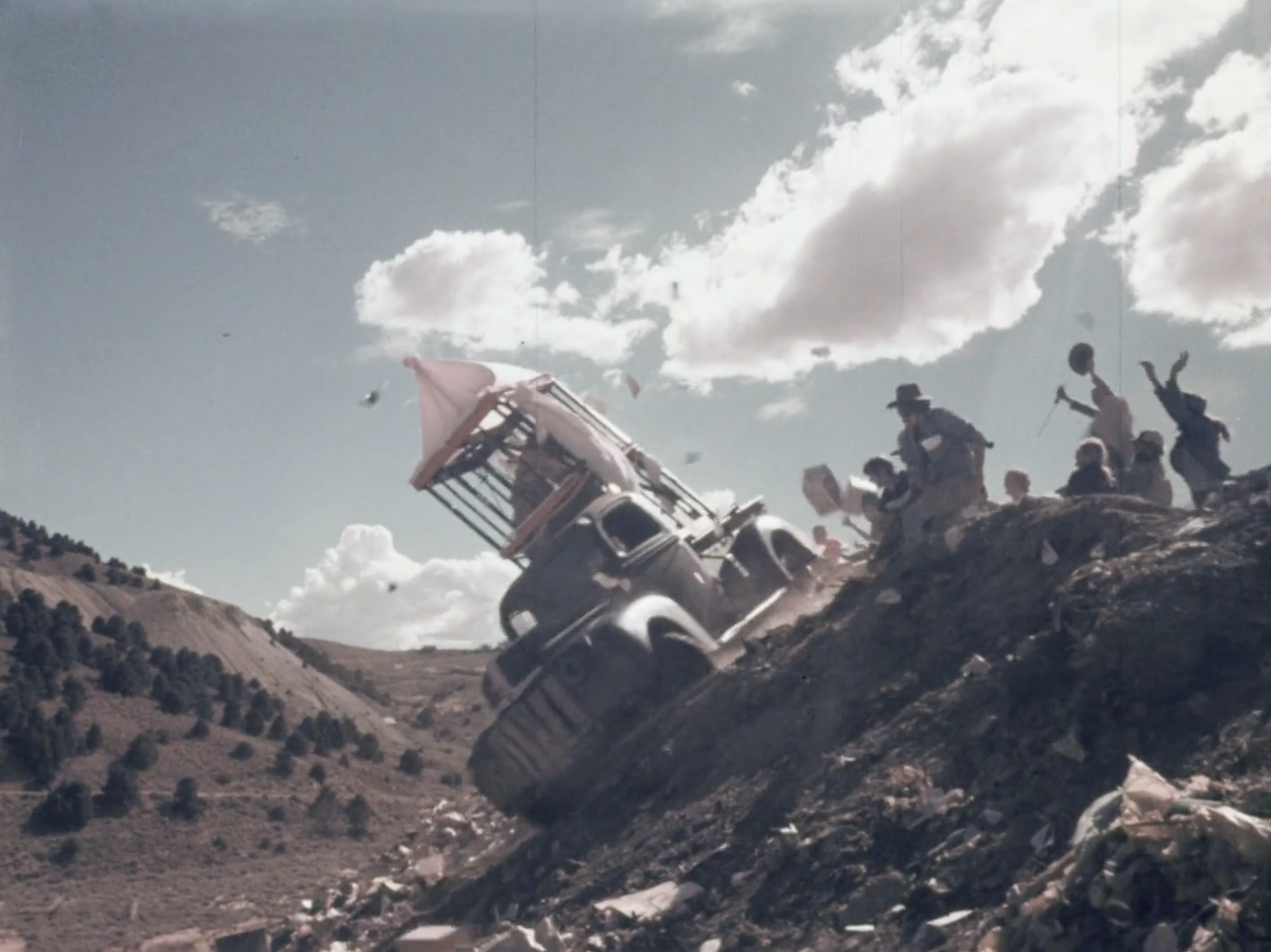
The Bonanza Citadel: Ghosts of the Comstock in The Godmonster of Indian Flats
The West was always weird. The Godmonster of Indian Flats weaves two narratives that gradually collide: one is the story of the Godmonster, a grotesque mutated sheep that escapes a scientist’s laboratory and terrorizes the town. The other is the story of Virginia City, Nevada, the palace intrigue of the town, whose citizens live somewhere between a tourist’s ideal of the Wild West, a townscape of ruined brick and rotting wood buildings, and a technologized present of video surveillance. It is a genre movie, and yet it is an imaginative variation on the genre movie that has so much to say about America that it extends far beyond the metaphor of the monster. The ecological terror of the Godmonster creature is absorbed into a broader constellation, of gothic paranoia, industrial espionage, and the aging nostalgia of an entrenched American idyll.
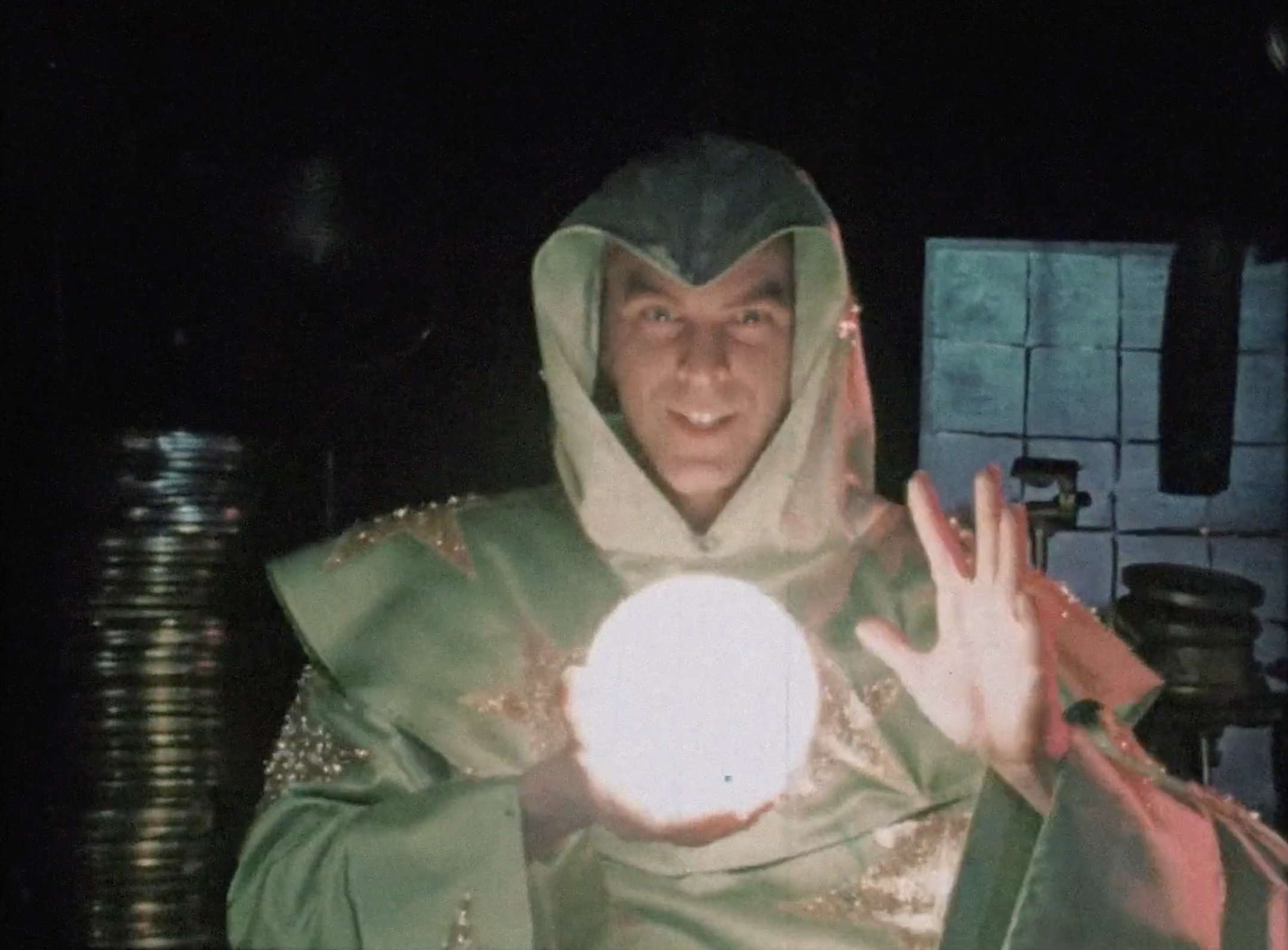
Wizards: Labour, Magic and The Wizard of Speed and Time
A willed enchantment between the apparatus and the subject becomes a matter of personal conviction in the work of American animator Mike Jittlov, a talented outsider to the Hollywood dream factory. His story is told in a rebellious meta-fable autobiographical feature film, The Wizard of Speed and Time, in which Jittlov dramatizes the experiences of an independent filmmaker who enters into a one-sided, devilish contract with a broadcaster. For Jittlov, labour and recreation are continuous, the work of the artist and the pleasure and pastimes of the artist are inextricably bound together. Mike Jittlov sees the world as open to wonder: his illusionism can set it in motion.
In this video essay, Stephen Broomer addresses The Wizard of Speed and Time in relation to the legacy of pixilation animation, and discusses Jittlov's greater themes of labour and illusion.

Rambler: Spoofing the Avant-Garde in Jane Conger Belson’s Odds & Ends
Jane Conger Belson, later Jane Conger Belson Shimané, entered San Francisco’s underground film scene in the mid-1950s through her common-law husband Jordan Belson, a painter and abstract animator whose light shows were a focal point in the city’s evolving intermedia counterculture. She made only two films, Logos and Odds & Ends, although claims have been made that she had three more films in progress circa 1960, when she and Belson parted. With the dissolution of their marriage she stopped making films. Brief though Conger Belson’s participation was, her films reflect an iconoclast sensibility common to the times.
In this video essay, Stephen Broomer discusses Jane Conger Belson's films in relation to the beat culture that had overtaken San Francisco in her day, with a focus on her collaboration with sound artist and comedian Henry Jacobs, and her playing the Holy Fool as maker of the essential 1959 film Odds & Ends.

Second Deaths: Metaphors for Tolerance in Mindwarp
Mindwarp was produced by Fangoria Magazine in a turbulent era, when horror culture was still a controversial corner of mass culture, a scapegoat for censors and for the law to explain aberrant, violent behaviours. The film uses the setting of a post-apocalyptic world to speculate on the nature of dreams and taboo fantasies, and ultimately, to forgive the taboo imagination as a necessary fact of a healthy, creative society, a bandage for the traumas of reality. In this video essay, Stephen Broomer situates Mindwarp in relation to post-apocalyptic cinema and John Calhoun's conception of the behavioural sink, as well as the climate of censorship that surrounds the dark corners of mass culture.
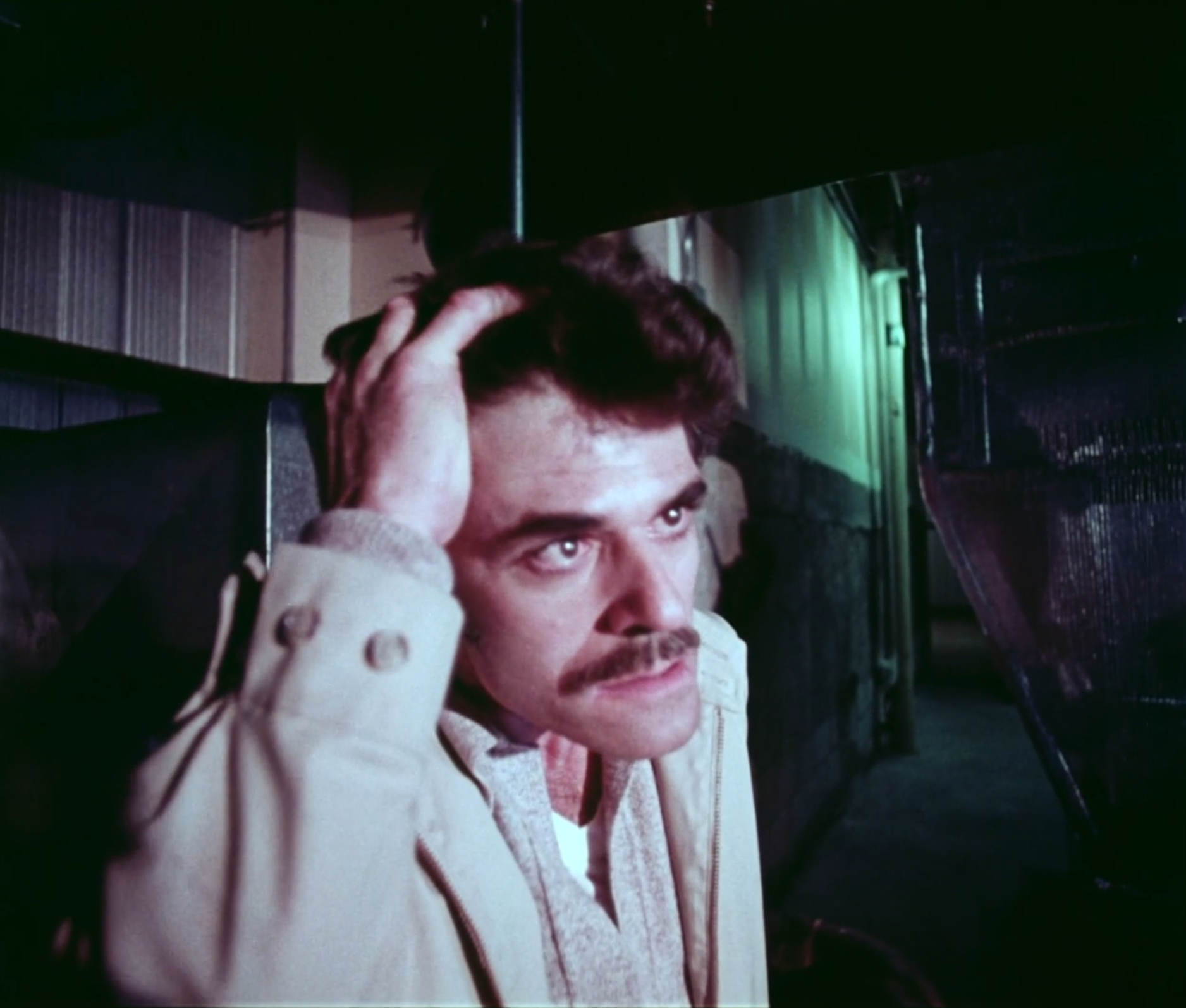
Screams from the Sky: Taking the Scenic Route with The Psychotronic Man
In The Psychotronic Man, Rocky Foscoe, an affable Chicago barber, has a paranormal encounter, when he drives out to the country to drink alone, far from the oppressive confusion of his modern life. His reverie is interrupted and he finds himself flying through the air in his Pontiac. After this, he develops apparent psychic abilities that manifest involuntarily—moving objects, causing chaos, even killing human beings, seemingly through the power of his mind.
In this video essay, Stephen Broomer deals with uniquely leisurely pace of The Psychotronic Man, and situates the film in the Cold War-era paranoia of 1970s American life.
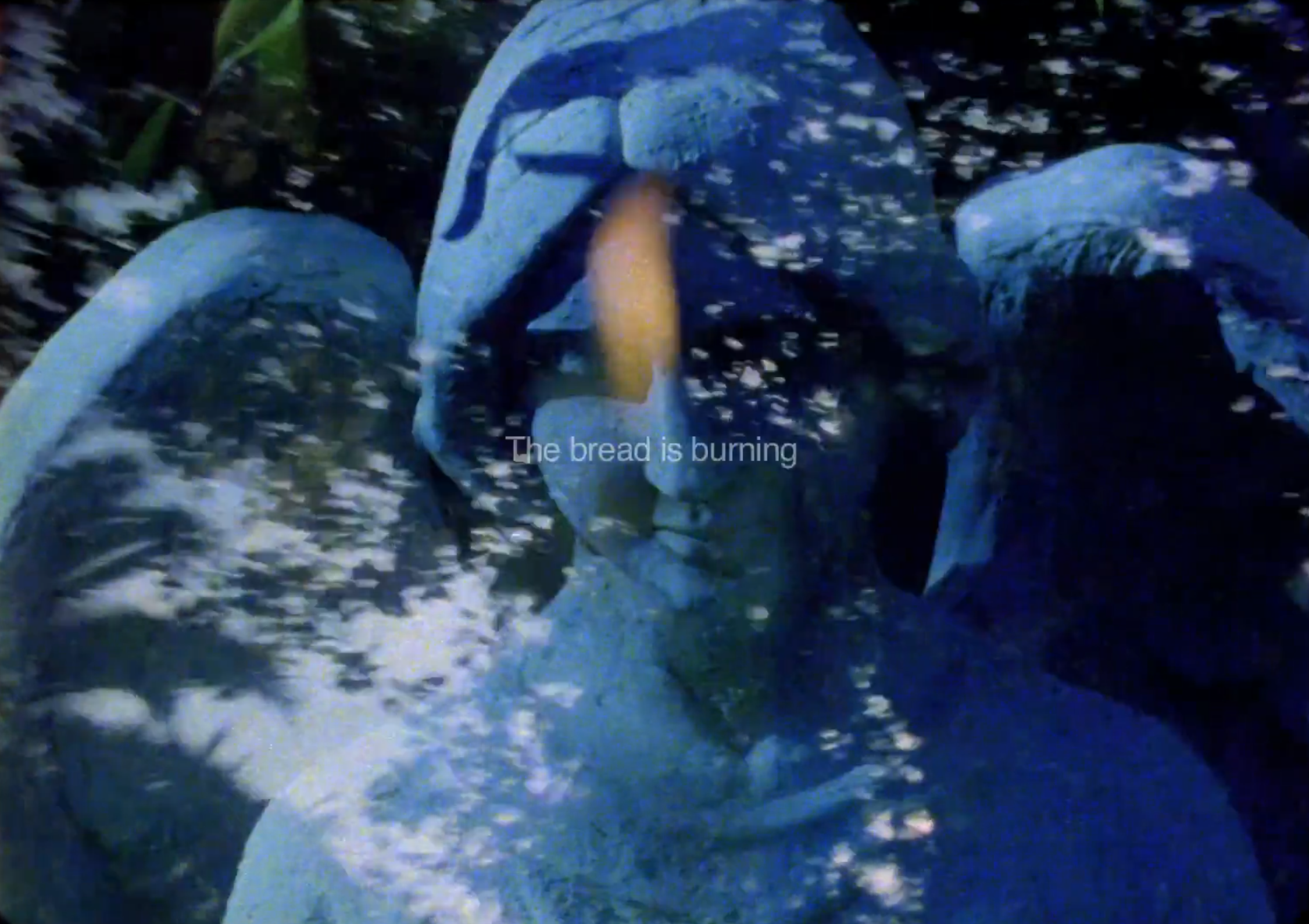
Revelations by Sunlight: Translation, Monument and Metaphor in Colectivo los ingrávidos' The Sun Quartet
The Sun Quartet confronts the climate of corruption and violence that dominates contemporary Mexican leadership and militarism. Across its four parts, the series exemplifies the poetic operations of the collective, who reconcile elements ranging from sound collage, superimposed cinematography, poetic texts both read and cast on screen, and documentation of protests. These elements assemble as a counter to official claims to truth regarding traumas as recent as the 2014 disappearance of 43 students from the Ayotzinapa rural normal school that happened in Iguala, Mexico, and as distant as the 1968 Tlatelolco massacre, a formative event in contemporary Mexican revolutionary consciousness. The Sun Quartet also summons resonances of older, unspeakable traumas, more distant still, rifts that recede deep into the past of Mexico, its genocides and massacres, the predation done in its name, its significance as a theatre to colonial ambitions. The Sun Quartet mixes phenomenological fascination with the terrifying climate of contemporary Mexican governance and the historical foundations of that terror.
In this video essay, Stephen Broomer discusses the metaphysical suggestions of Colectivo los ingrávidos' aesthetic approach to contemporary Mexico, an inferno of government abuse and multi-generational civilian terror.
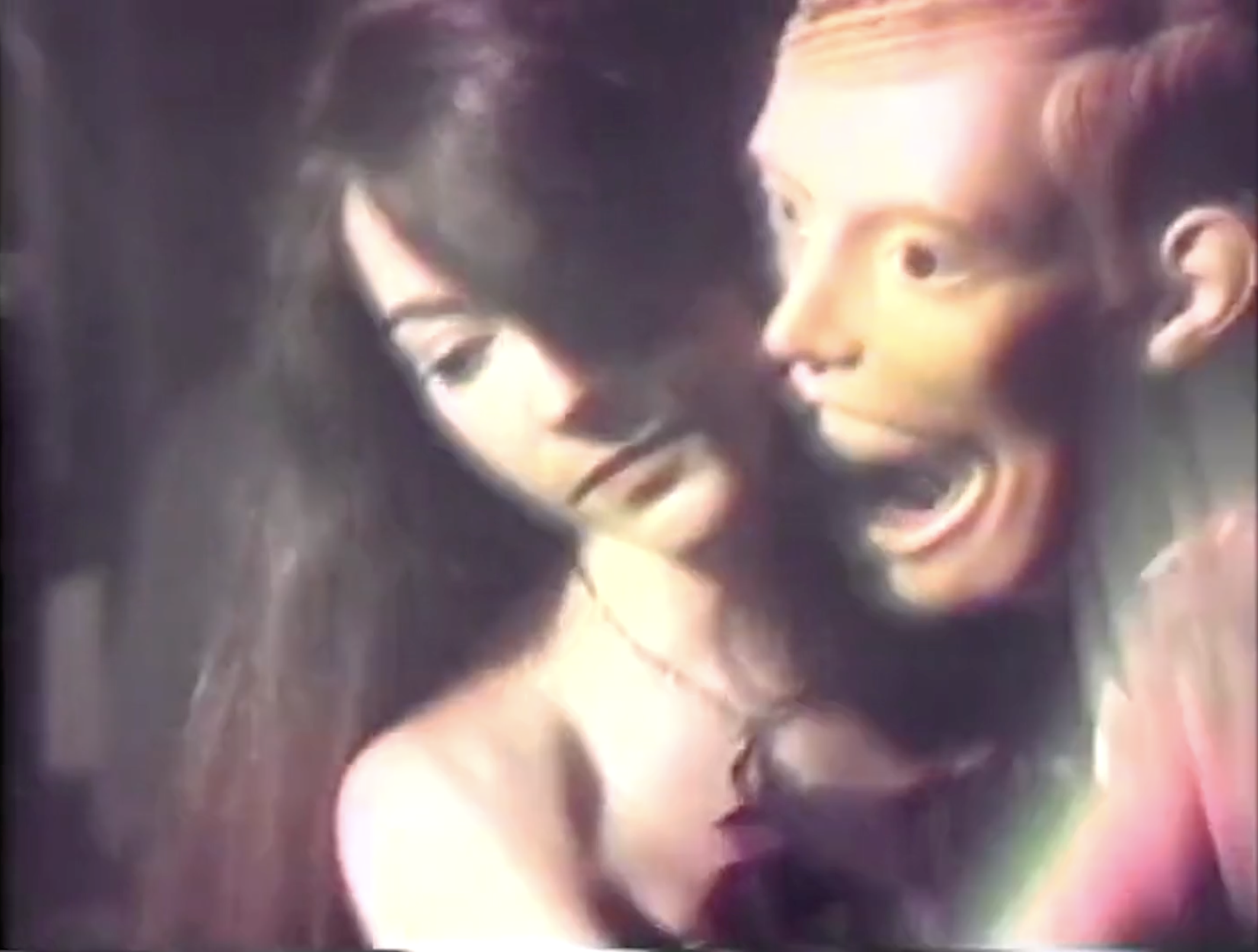
Plastic Masks: Possibly in Michigan as Urban Legend
Possibly in Michigan is a work of American video art that brings Surreal fantasy into dialogue with feminist critique. In it dwells an absurd synthesis of Melpomene and Thalia, a grotesque grin creasing tear-stained cheeks, topped with a nest of snakes like the head of Medusa. Its story is a fable, told in operetta and masquerade. Masked players populate this elsewhere, somewhere in America, somewhere we met before, possibly in Michigan, or in the suburbs of Cleveland, where it was shot. They are symbolic, lurking, stalking figures, but they know how to party. Sometimes they wear animal masks, which is appropriate because they are the frog princes and big bad wolves of fairy tales, but they are also just humans in masks—humans who are frailer and crueler, more tragic and less innocent than other creatures of the earth. Sharon and Janice meet in a mall, where they are stalked by Arthur. Don’t worry about Arthur, though: he’ll never guess after whom he’s walkin’...
In this episode, Stephen Broomer takes on Cecelia Condit's video in relation to epic theatre, the fairy tale and the urban legend, and veristic surrealism, inquiring to the limits of video's documental nature, and the motives of Condit's plastic disruptions.
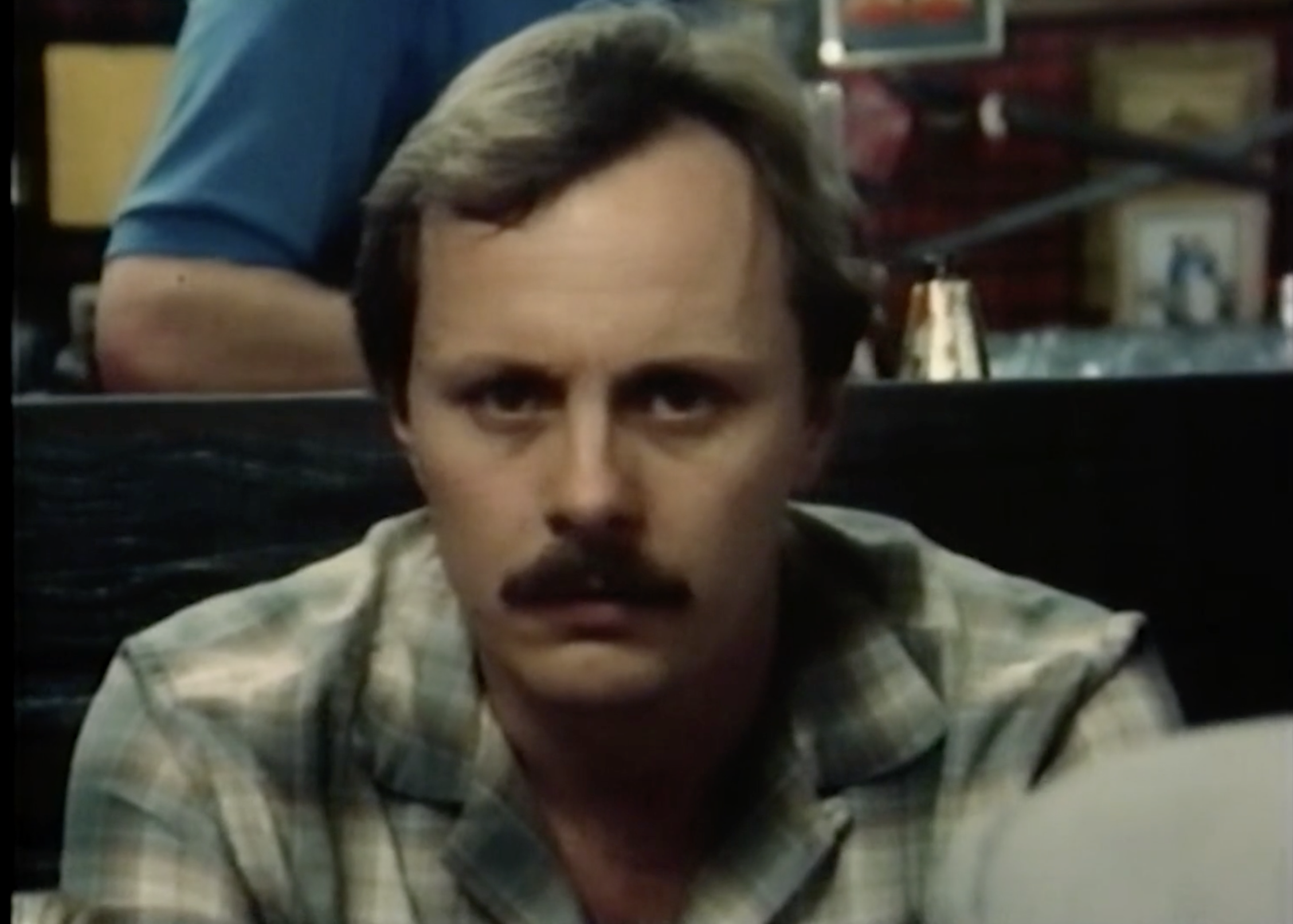
Sympathy for the Devil: Walking a Mile with MurderLust
Appearances can be deceitful, and beneath such a deception there may be no depth at all, no substantive or satisfying explanation. Steve Belmont, a security guard and Sunday school teacher, moonlights as the 'Mojave Murderer', killing sex workers and dumping their bodies in the desert. Belmont is a comical grotesque, interesting only for the lack of explanation for his crimes. He is unfixed, chameleonic, charming to some, to others, a surly misanthrope, a predator. He is a man who idolizes nothing and nobody, but who pursues authority with calculating desire.
This video essay situates Belmont in the public perception of violence and authority, while also addressing the film itself as the blackest of black comedies, a gruesome satire of the hypocrisy and naivety of Christian America.
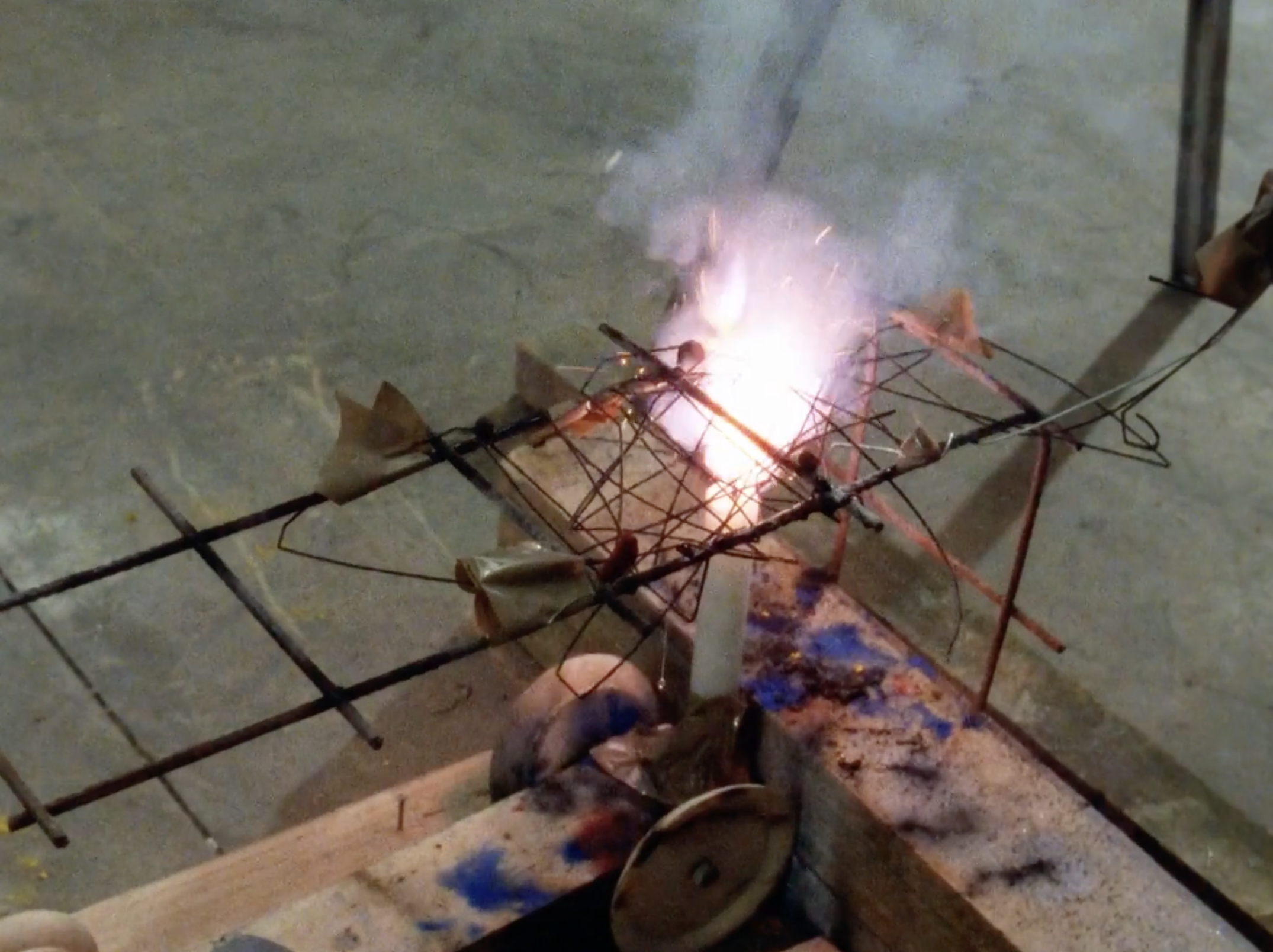
Old Time Continuity: Illusion, Futility, and The Way Things Go
In 1987, the Swiss artist duo Peter Fischli and David Weiss released The Way Things Go, a thirty-minute 16mm film that portrays the continuity of a single chain reaction. Across a series of long takes, maintaining the illusion of a single take, a chain of simple, at times absurdly comic physical reactions occur in a chemical-industrial game of dominos.
In this video essay, Stephen Broomer explores the idea of continuity in cinema, as it appears in Fischli and Weiss's film, but also, as it evolved from early cinema through to its refinement in the poetics of the Soviet montage theorists, and its interaction with the work of filmmakers as diverse as Alfred Hitchcock, Robert Breer and Michael Snow. At the same time, Broomer undertakes an exploration of another precedent for Fischli and Weiss's films, the marvellous imaginary machines of cartoonist Rube Goldberg.
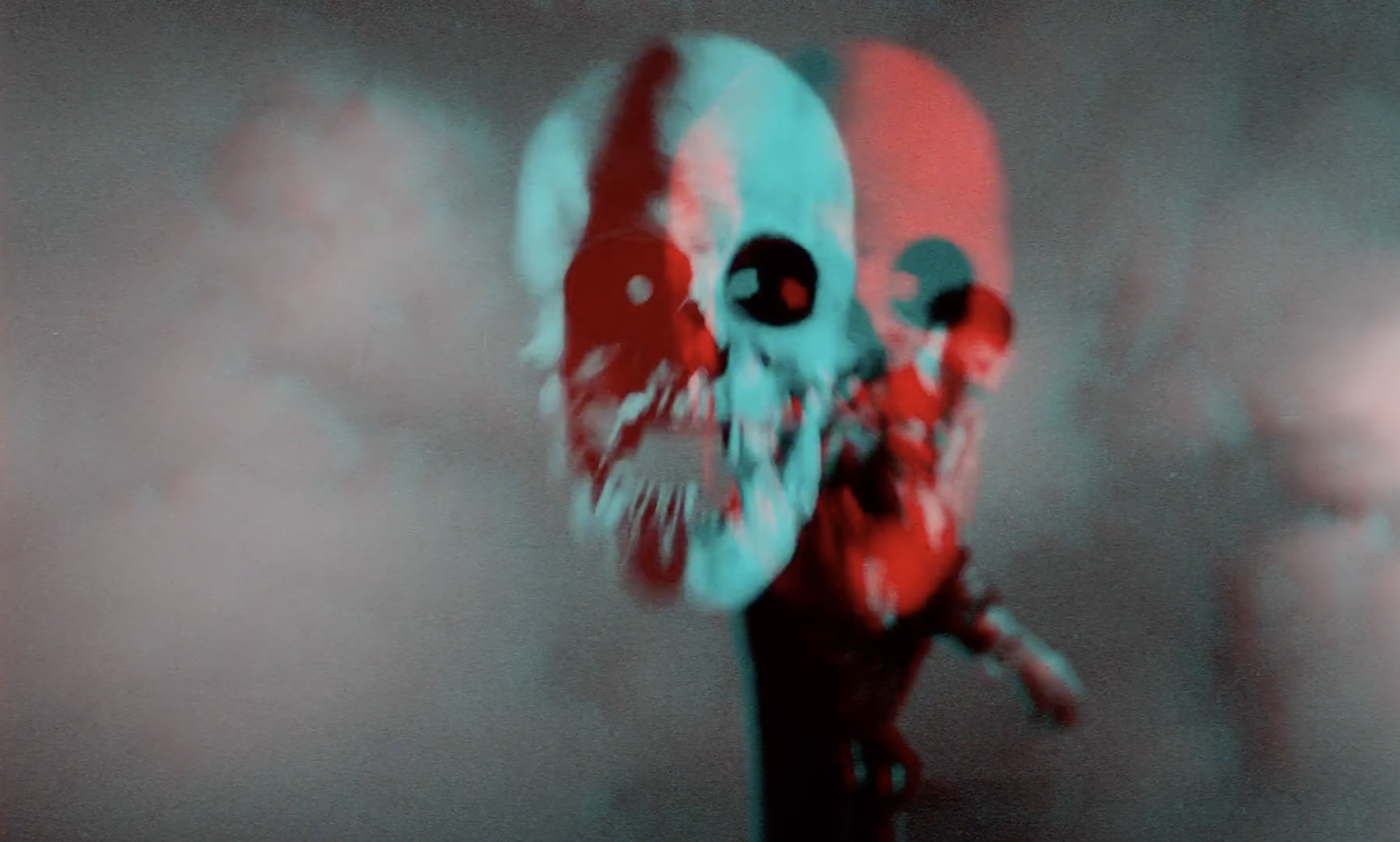
The Eyes of Hell: Depth and Despair in The Mask
In the stereoscopic 3-D movie, the imagined things on the screen might escape the canvas and become real, to terrorize and haunt and touch us; it’s a grand exaggeration of the early dreams of cinema, that the phantasms might gain their own agency, like souls stolen through an anthropologist’s camera, or that, conversely, the projections could be stepped into, an immersive simulation of the halls of reality. Julian Roffman's The Mask is such a film: it suggests folie à deux, the collective unconscious, the transmission of a nightmare from one person to another. It rationalizes its 3-D gimmickry with corresponding themes, vividly realizing the slumber of the psychoanalyst’s couch, synthesizing visions as mysterious as those conceived under hypnosis.
With this video essay, Stephen Broomer addresses The Mask in the context of 3-D, unpacks the manifestation of its themes in an analysis of the film's three hallucinatory sequences, and considers its themes as a collision of modern and ancient belief.
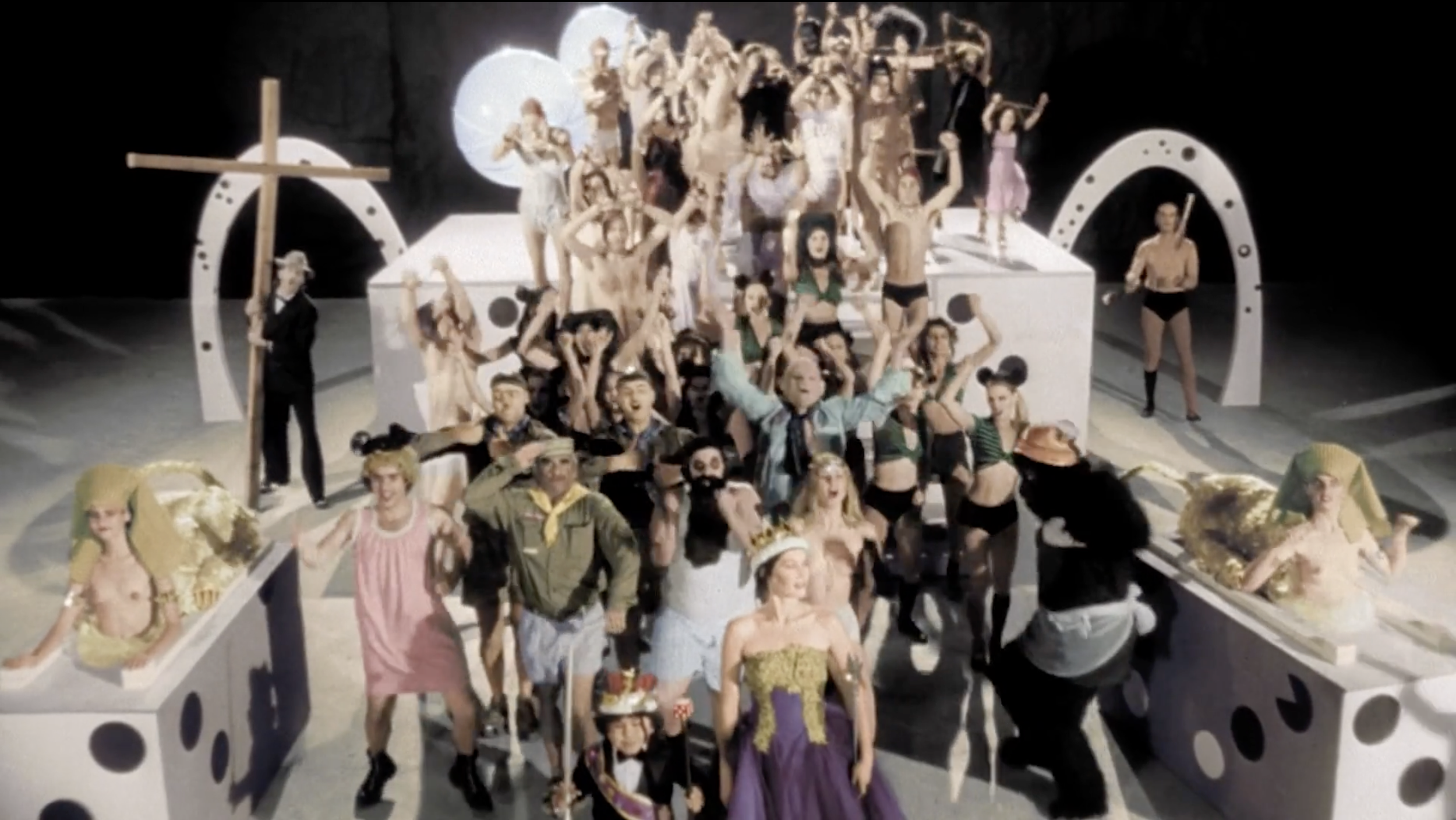
Beautiful Dreamers: Lost and Found in the Forbidden Zone
Through the course of the 1970s, Richard Elfman led the avant-garde surrealist street theatre troupe and band The Mystic Knights of the Oingo Boingo. In 1978, Elfman would make Forbidden Zone, a feature-length musical fantasy that sought to translate the band’s stage show into a movie. The result is an absurdist, vulgar, ‘pataphysical cabaret. Forbidden Zone begins in minstrelsy; its world is one of hallucination and perversity and transgression. In this video essay, Stephen Broomer focuses on the film's absurdism as an act of fantastical reflection on our rude world.

Discreet Charms: The Last Slumber Party and the Order of Dreams
Made in suburban New Orleans in 1984, Stephen Tyler's The Last Slumber Party is an exceptional slasher: its characters occupy an oneiric space where dreams and other digressions challenge the asserted reality of plot, a messy extemporization of campfire storytelling. It is a surreal slasher, bowing to the intuition of dreams, the concealed truths of the subconscious, indicative of the collaborative dreamlife of adolescent friendships and of the strange fear that creeps in when dreams reveal themselves. In this video essay, Stephen Broomer argues that Tyler's film develops, from its clichéd premise, into an imaginative film about dreams and omens.

Fragile Systems: The Media Hybrids of Christine Lucy Latimer
The films and videos of Christine Lucy Latimer defy their containers: they reveal the fragile systems underlying media; they press the boundaries of image-making machines; they embrace the faults and frailties of vision. Almost all of Latimer’s work is silent, but nothing is truly silent: Latimer draws out images that recall the hums, tweets, and mechanical moans of the technology with which she made them. Latimer’s work began long after most of the formats she pursues had become obsolescent. Refusing the universal nostalgia of the antique camera and the antique image, her works are undeniably present-facing and playfully disobedient, ethereal, abstract. Supremely self-conscious and yet mystical, they are seances that draw out the ghosts in the machine. In this video essay, Stephen Broomer charts Latimer’s aesthetic development from 2002 to the present, from films and videos that bear an overt eroticism (the scrambled kickboxing of Mosaic, the glow of a stripping woman filtered through a toy camera in Ghostmeat) to explorations of the patina of resilient media (the damaged digital photos of House Pieces, the foldable hologram imprints of Tender).